

SOUTHEAST
March 2004

1 of 4


SOUTHEAST
March 2004


1 of 4
This trip originated with an unexpected e-mail, thanks to a report on this website.
“I sure enjoyed your Costa Rica adventures,” the message began. Then, referring to the Peanut-head Bug (or
Machaca) pictured in my July 2003 trip, the writer went on to explain that, at least according to one account, “if a girl is
stung by a Machaca, she must go to bed with her boyfriend within 24 hours or she will die."
Who knew? Gotta love a reader with an eye for details.
Seems my correspondent was planning a trip to the tropics, and after discovering my CR reports on-line, he
wrote for advice on herping Costa Rica. We began a friendly correspondence and I learned that Richard lives
surrounded by “some serious Canebrake country.” Well, that certainly got my attention. I’ve always admired the
beautiful southern variety of Timber Rattlesnake but had never seen one in the wild. For years my brother Ron and I
talked about going to South Carolina and Georgia in search of a Canebrake, so when Richard issued an invitation to
come on down
―
closing with the magic words “almost a sure thing”
―
we knew where our next trip would be.
I drive with my friend Danny to Ron’s house in North Carolina. Figure we’ll start herping right away, so before
heading to SC we check out a nearby ephemeral pond that's a breeding site for Spotted Salamanders. The bottom is
scattered with little white pyramids of sperm packets, indicating that males had already been in the water a few days
before. The next warm, wet night will bring the females in a mass congregation, but this evening is still a bit too cool.
Nevertheless, we do find a few ambitious ambystomids making their way to the pond in advance of the big night,
known to local observers as "the lusty frolic."
This female is marching through the leaf litter down toward the water. As you can see, she's completely bloated
with eggs.
Once they enter the water, the females position themselves above a spermatophore and grasp it with their
cloacal claspers. The eggs are fertilized, then deposited in a mass anchored to a submerged twig or a mat of leaves.
After they finish breeding, the females emerge from the water looking considerably depleted (sort of like little
stretched-out accordions) but judging from their smiles, one suspects they leave satisfied.
Next morning we drive to South Carolina in search of our first target, Scarlet Kingsnakes. Danny’s SUV is
stuffed with all our gear
―
cameras, snake hooks, MoonPies, etc.
―
but our most valuable piece of equipment is
affixed to the front dash: a totem of our guardian spirit (courtesy of USPS) in supplication for a successful hunt.
You think I’m kidding about most valuable? Well, we arrive at our first stop, a stand of longleaf pines.
Approach our first tree, a long-dead snag with just a bit of remaining bark . . .
. . . and are rewarded with this:
The very first attempt at our first site, and we immediately score our first target! Behold the power of postage.
A few minutes later Danny is checking out a different tree, going through the exfoliating bark, when out falls
another one! Just as Richard had described in his e-mails, “ they drop like wonderful scaly candy to the ground.”
Feeling totally spoiled, we decide to move on after an hour passes and no more snakes are found. We come to an
abandoned shack with tin and boards scattered in the woods, and spot a large Green Anole wearing his conservative
suit, the nice brown one that goes so well with wooden walls.
More daring are these flashy ladybugs decked out in fashionable warning colors.
In the woods we find amphibians keeping moist beneath rotting logs . . .
. . . and under boards in the collapsed building we discover Skinks. Usually slippery and fast and eager to
escape, but on this day cold and quite willing to pose, though happy still to bite the hand that seized them.
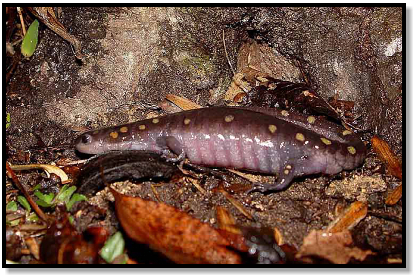

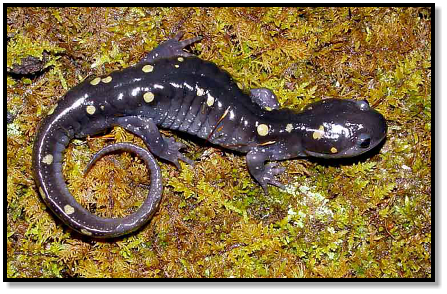
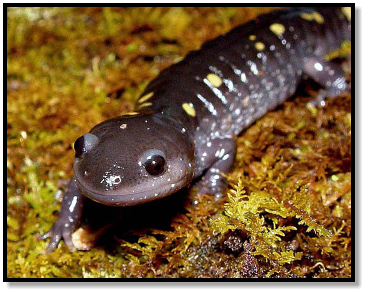
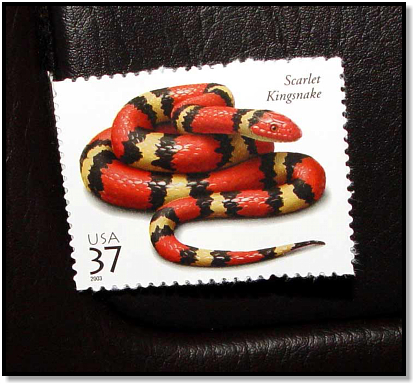
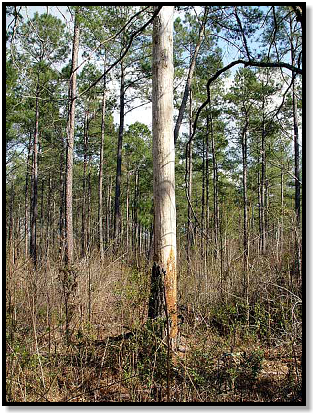

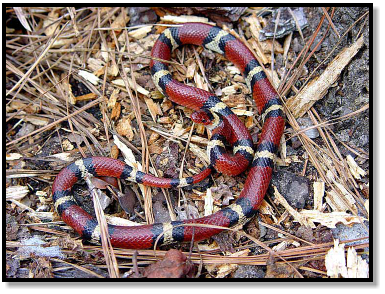
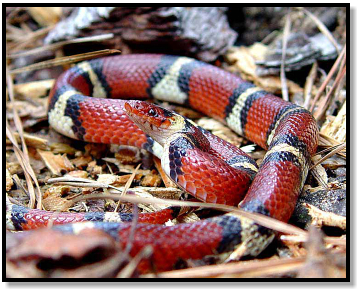
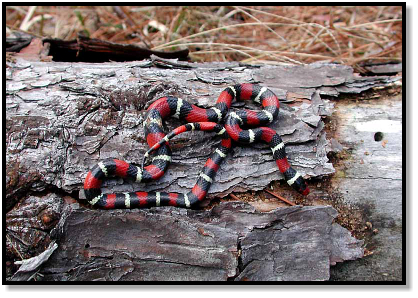
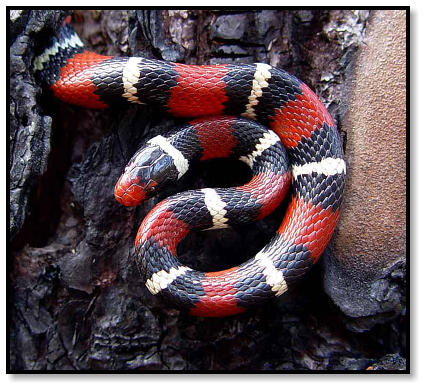
Spotted Salamander
Ambystoma maculatum
Scarlet Kingsnake
Lampropeltis triangulum elapsoides

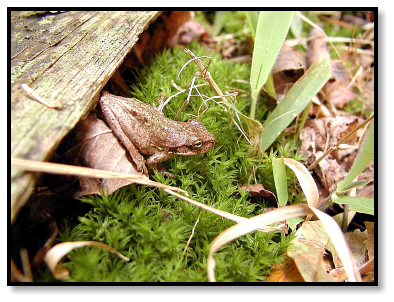
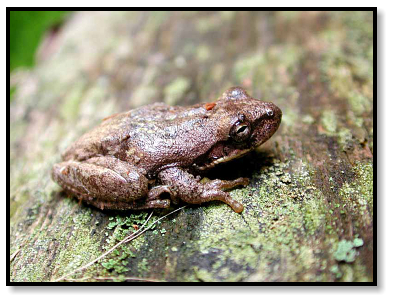

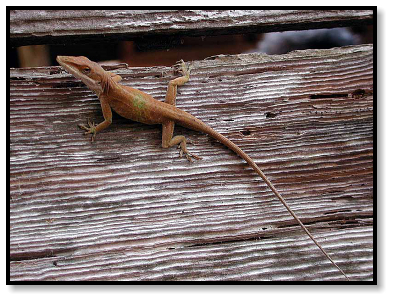


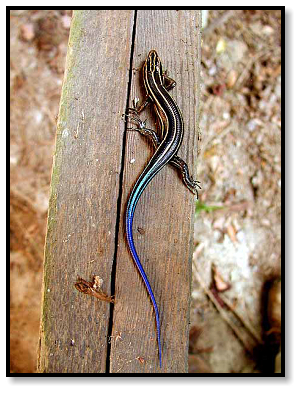
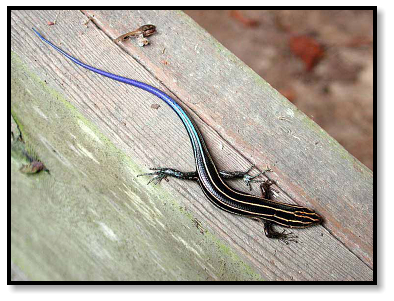
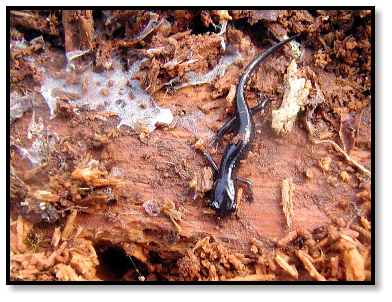
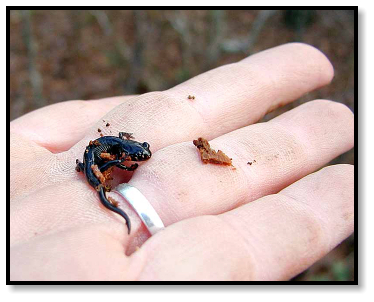
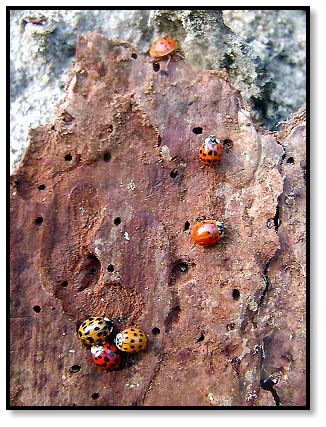

Green Anole
Anolis carolinensis
Slimy Salamander
Plethodon glutinosus
Pine Woods Tree Frog
Hyla femoralis
Five-Lined or Southeastern Five-Lined Skink (?)
Eumeces fasciatus or Eumeces inexpectatus
juvenile (with blue tail) and adults










